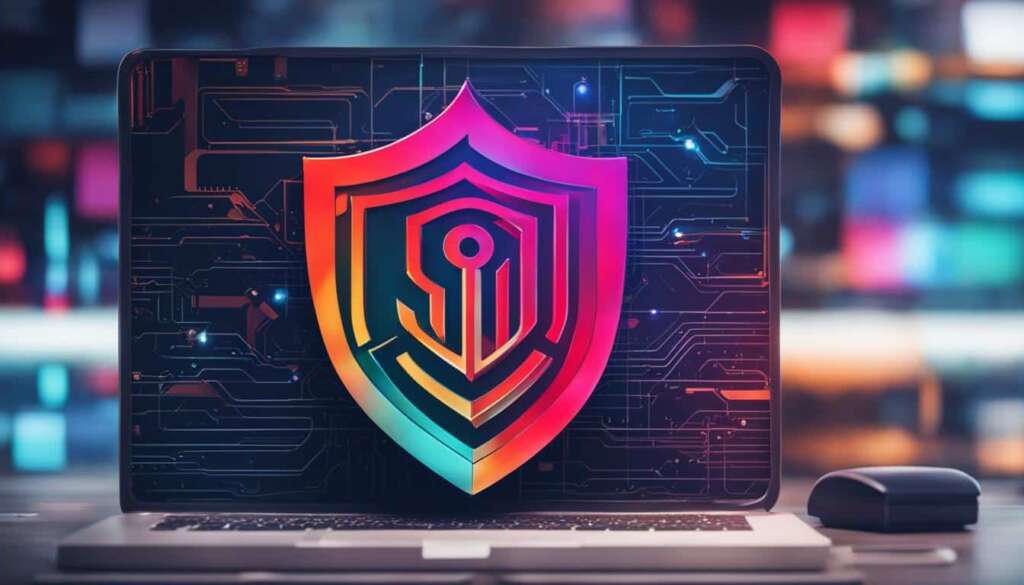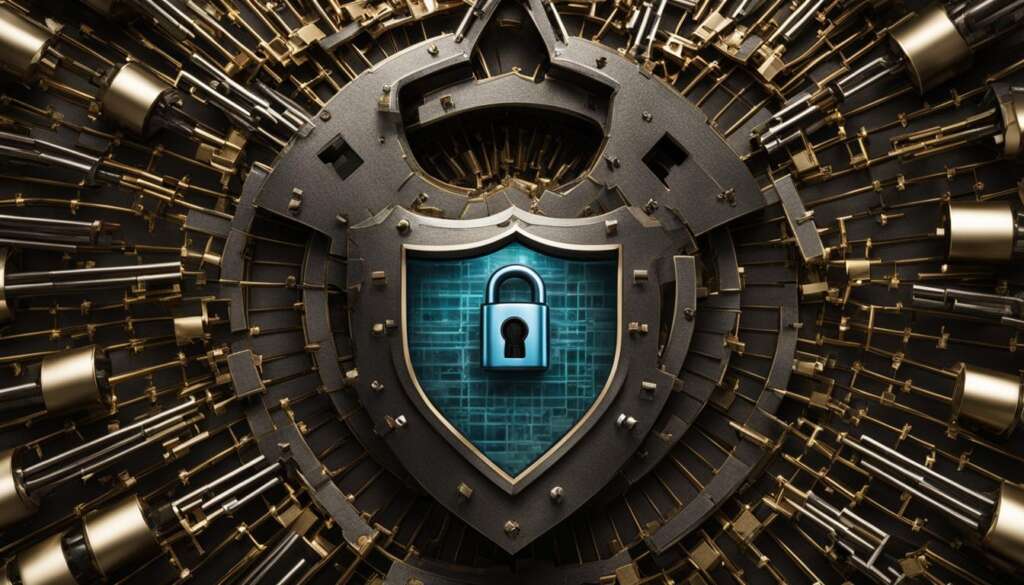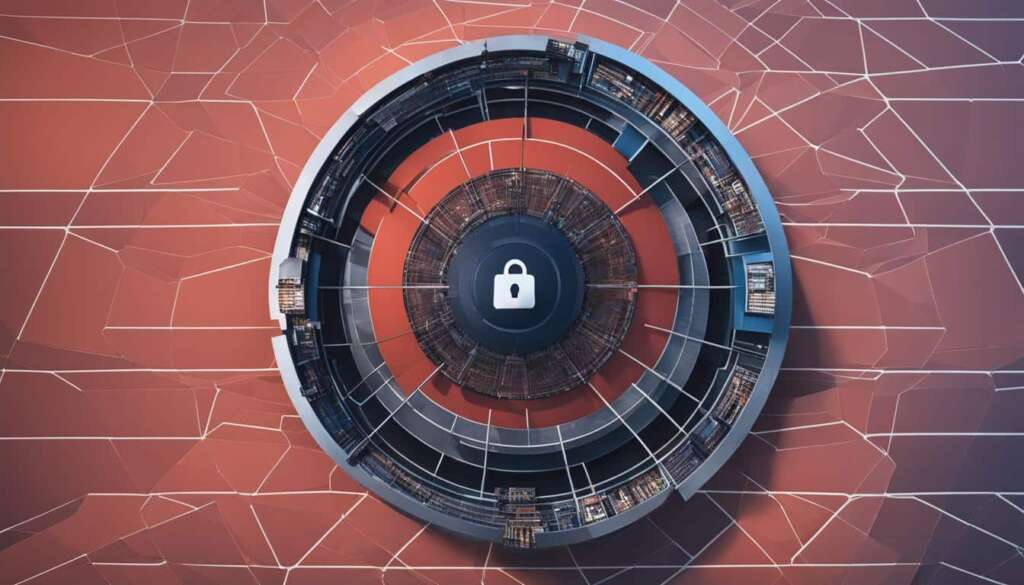Table of Contents
As the digital landscape continues to evolve, media and entertainment companies face increasing cyber threats that pose a risk to their valuable assets, particularly their content and intellectual property. Protecting these assets is crucial to avoid revenue losses and damage to reputation. In this article, we will explore the importance of media and entertainment cybersecurity, focusing on protecting intellectual property from cyber threats, data breaches, and unauthorized access.
The Importance of Pre-Release and Post-Release Content Protection
Protecting content in the media and entertainment industry is crucial to safeguard intellectual property and prevent revenue losses. This includes both pre-release and post-release content protection, which play vital roles in ensuring the success and profitability of media companies.
Pre-release content protection is focused on shielding content from theft or leaks before its official release. This involves implementing robust security measures to prevent unauthorized access and distribution. By protecting content during the pre-release phase, media companies can maintain the excitement and anticipation among viewers and prevent piracy or illegal distribution before the content is made available.
Post-release content protection is equally important in guarding against content theft and piracy. After a release, media companies need to employ effective anti-piracy measures to prevent unauthorized copying, distribution, and sharing of their content. This can involve implementing digital rights management (DRM) technologies, employing takedown procedures to remove infringing content, and collaborating with anti-piracy organizations to enforce copyright protection.
The Impact of Content Theft and Piracy
Content theft and piracy have significant consequences for media and entertainment companies. They can result in substantial financial losses, damage to reputation, and erosion of viewer trust. Piracy not only affects revenues but also undermines the incentives for creativity and investment in new content, ultimately impacting the sustainability of the entire industry.
By prioritizing pre-release and post-release content protection, media and entertainment companies can mitigate the risks associated with content theft and piracy, safeguard intellectual property, and ensure the long-term success and profitability of their businesses.
| Pre-Release Content Protection | Post-Release Content Protection |
|---|---|
| Prevents theft or leaks before official release | Guards against content theft and piracy after release |
| Protects content integrity and exclusivity | Prevents unauthorized copying, distribution, and sharing |
| Enhances viewer excitement and anticipation | Maintains control over content dissemination |
The Expanding Role of Consumer Data in Media and Entertainment
The media and entertainment industry is increasingly relying on consumer data to drive decision-making and personalize the user experience. As companies gather more and more data from their audiences, the need for robust cybersecurity strategies to protect this sensitive information becomes even more critical. Ensuring data privacy and implementing effective cybersecurity measures are not only essential for legal compliance but also vital for maintaining the trust and loyalty of consumers.
Protecting consumer data requires a comprehensive cybersecurity strategy that encompasses various aspects of information security. This includes encryption techniques to safeguard data in transit and at rest, strong access controls to prevent unauthorized access to sensitive information, and regular security audits and vulnerability assessments to identify and address any potential weaknesses. By proactively implementing these measures, media and entertainment companies can minimize the risk of data breaches and ensure the security of consumer data.
Additionally, data privacy regulations such as the General Data Protection Regulation (GDPR) in Europe and the California Consumer Privacy Act (CCPA) in the United States have raised the bar for data protection standards. Companies operating in these jurisdictions must comply with these regulations, which include provisions for data breach notifications, consumer consent, and the right to be forgotten. Failure to comply with these regulations can result in severe financial and reputational consequences.
Ultimately, safeguarding consumer data and prioritizing data privacy are not only ethical responsibilities but also sound business practices. By demonstrating a commitment to protecting sensitive information, media and entertainment companies can build stronger relationships with their audiences and differentiate themselves in a highly competitive industry.
Table: Key Elements of a Cybersecurity Strategy for Protecting Consumer Data
| Element | Description |
|---|---|
| Data Encryption | Implement strong encryption techniques to protect consumer data in transit and at rest. |
| Access Controls | Establish strict access controls to prevent unauthorized access to sensitive information. |
| Security Audits | Conduct regular security audits and vulnerability assessments to identify and address potential weaknesses. |
| Compliance with Regulations | Ensure compliance with data privacy regulations, such as GDPR and CCPA, to protect consumer rights and avoid penalties. |
| Employee Training | Provide regular cybersecurity training to employees to enhance awareness and minimize the risk of human error. |
| Incident Response Plan | Develop a comprehensive incident response plan to effectively handle data breaches and mitigate their impact. |
The Importance of Cybersecurity at the Board Level
Cybersecurity is not just a concern for the technology team; it is a strategic business issue that requires attention at the board level. Despite the increasing number of cyberattacks and the high stakes involved, many boards do not give cybersecurity the attention it deserves. This lack of board-level attention can put media and entertainment companies at risk of data breaches, intellectual property theft, and damage to their reputation.
Information security is crucial for protecting an organization’s valuable assets, including intellectual property and sensitive customer data. Boards need to recognize the importance of cybersecurity and prioritize it as a critical business function. By doing so, they can set the tone from the top and ensure that cybersecurity is integrated into the company’s overall strategy.
Board-level attention to cybersecurity involves understanding the potential risks and threats that the organization faces, as well as the legal and regulatory requirements that need to be met. It also requires establishing clear roles and responsibilities for cybersecurity, both at the board level and within the organization. Board members should receive regular updates on cybersecurity initiatives and be actively involved in reviewing and approving cybersecurity policies and measures.
| Key points | Benefits |
|---|---|
| Recognize the importance of cybersecurity | Protect valuable assets |
| Prioritize cybersecurity as a strategic imperative | Mitigate the risk of data breaches |
| Understand potential risks and threats | Ensure compliance with legal and regulatory requirements |
| Establish clear roles and responsibilities | Foster a culture of cybersecurity awareness |
| Stay informed about cybersecurity initiatives | Review and approve cybersecurity policies and measures |
“Cybersecurity is not just a technology issue; it is a business issue that requires attention at the highest levels of an organization.” – Cybersecurity Expert
By elevating cybersecurity to the board level, media and entertainment companies can demonstrate their commitment to protecting their intellectual property, customer data, and overall business success. Board-level attention creates a culture of cybersecurity awareness throughout the organization and sends a clear message that cybersecurity is a priority.

Key Takeaways:
- Cybersecurity is a strategic business issue that requires attention at the board level.
- Boards need to recognize the importance of cybersecurity and prioritize it as a critical business function.
- Board-level attention involves understanding potential risks, establishing clear roles, and staying informed about cybersecurity initiatives.
- Elevating cybersecurity to the board level fosters a culture of cybersecurity awareness throughout the organization.
The Growing Threat Landscape: Facing Evolving Cyberattacks
The media and entertainment industry is facing an ever-growing threat landscape, with cyberattacks becoming more sophisticated and challenging to defend against. As technology advances, so do the tools and tactics employed by hackers, making it difficult for companies to stay ahead of the curve. The evolving security challenges in this industry require robust cybersecurity measures to protect intellectual property and sensitive information from falling into the wrong hands.
Cyber threats are on the rise, with sophisticated hackers targeting media and entertainment companies for various reasons. Intellectual property theft, data breaches, and ransomware attacks are some of the common threats faced by businesses in this industry. These attacks not only result in financial losses but can also tarnish a company’s reputation and erode consumer trust. It is crucial for organizations to understand the gravity of these threats and take proactive steps to safeguard their assets.
The Changing Face of Cyber Attacks
Hackers are continuously adapting their techniques to exploit vulnerabilities and gain unauthorized access to valuable assets. The media and entertainment industry, with its vast amount of digital content and consumer data, presents an attractive target. Cybercriminals employ advanced methods such as social engineering, spear-phishing, and malware to infiltrate systems and steal sensitive information. One successful attack can have far-reaching consequences, leading to massive financial and reputational damage.
“Cyberattacks continue to grow in number and sophistication, making it difficult for entertainment and media companies to stay ahead of attackers. It is no longer a question of if a business will suffer an incident, but when.”
Companies must implement a multi-layered cybersecurity strategy that includes proactive threat detection, regular security assessments, employee training, and robust incident response plans. By staying informed about the evolving threat landscape and investing in effective security measures, the media and entertainment industry can better protect its valuable assets from cybercriminals.
| Cyber Threats | Description |
|---|---|
| Intellectual Property Theft | Cybercriminals seek to steal valuable intellectual property such as unreleased content, scripts, and trade secrets to sell or distribute illegally. |
| Data Breaches | Unauthorized access to sensitive consumer information, including personal data and payment details, resulting in potential identity theft and financial loss. |
| Ransomware Attacks | Hackers encrypt a company’s data and demand a ransom in exchange for its release, causing significant disruption and potential data loss. |
As the media and entertainment industry embraces digital transformation and relies heavily on technology, it must also prioritize cybersecurity. In an interconnected world, where information flows seamlessly and cyber threats are ever-evolving, staying vigilant is crucial. By proactively addressing evolving security challenges and investing in robust cybersecurity measures, companies can safeguard their intellectual property, protect sensitive information, and secure the long-term success of their business.
Strengthening the Ecosystem and Third-Party Partnerships
Protecting intellectual property and sensitive information in the media and entertainment industry requires a collective effort from all stakeholders involved in the ecosystem. This includes media companies, production houses, technology providers, vendors, and third-party partners. Collaborating closely with these entities is essential to strengthen the overall cybersecurity posture and ensure the security of critical assets.
One of the key challenges in this process is addressing the risks associated with third-party partnerships. While these partnerships bring numerous benefits, they also introduce potential vulnerabilities. Media and entertainment companies must establish robust information security policies and procedures that extend to all third-party partners. These policies should outline the security requirements and expectations, including data protection measures, access controls, and incident response protocols.
Vendor security is another critical aspect of ecosystem security. Media companies often rely on a wide range of vendors for services such as cloud hosting, content production, and distribution. It is crucial to thoroughly vet these vendors and ensure they meet stringent security standards. This includes conducting due diligence on their security practices, compliance with relevant regulations, and their ability to protect sensitive information.

The Importance of Employee Awareness
While third-party risks are a concern, media companies often find that the biggest cybersecurity challenges arise from within their own organizations. Many data breaches and security incidents occur due to employee negligence or lack of awareness about information security risks.
Therefore, it is essential to prioritize employee awareness and training as part of the overall cybersecurity strategy. Regular training sessions should be conducted to educate employees about best practices for protecting sensitive information, recognizing potential threats, and understanding their role in maintaining information security. By instilling a culture of cybersecurity awareness, media and entertainment companies can significantly reduce the risk of internal security incidents.
By strengthening the ecosystem, establishing robust information security policies, and prioritizing employee awareness, media and entertainment companies can enhance their cybersecurity posture and protect their valuable intellectual property and sensitive information.
Identifying and Protecting Critical Assets
In the media and entertainment industry, not all information assets hold the same level of importance. It is crucial for companies to identify their critical assets and implement enhanced protection measures to safeguard them. These critical assets include intellectual property, sensitive information, and consumer data. The comprehensive protection of these assets involves determining their locations, controlling access to them, and ensuring secure handling when transferring them to third parties.
To illustrate the importance of identifying critical assets, let’s take a closer look at a table showcasing examples of these assets and the corresponding protection measures:
| Asset | Protection Measures |
|---|---|
| Intellectual Property | Implementing strong access controls, encryption, and regular employee training on security best practices. |
| Sensitive Information | Using secure data storage and transmission methods, requiring multi-factor authentication, and conducting regular security audits. |
| Consumer Data | Adhering to data protection regulations, implementing robust data encryption, and regularly monitoring for unauthorized access. |
By identifying critical assets and implementing these enhanced protection measures, media and entertainment companies can minimize the risk of data breaches, unauthorized access, and potential financial and reputational damages.
The Increasing Threat Landscape and Vulnerabilities
The media and entertainment industry operates in a digital landscape that is increasingly interconnected and reliant on technology. While this presents countless opportunities for growth and innovation, it also exposes companies to a variety of vulnerabilities and cybersecurity threats. The rapid pace of digital connectivity and growing dependence on technology has made it more challenging than ever to protect intellectual property and sensitive information.
One of the key challenges facing the industry is the expanding threat landscape. With the rise of cybercriminals and sophisticated hacking techniques, media and entertainment companies are constantly at risk of cyberattacks. From data breaches to ransomware attacks, these threats can have severe consequences, including financial loss, reputational damage, and loss of intellectual property. It is essential for companies to understand the evolving threat landscape and take proactive measures to defend against these risks.
Another area of concern is the growing vulnerabilities of businesses within the industry. As companies become more interconnected, the potential for attacks increases. From supply chain vulnerabilities to insider threats, there are multiple entry points for cybercriminals to exploit. Media and entertainment companies must identify and address these vulnerabilities to strengthen their cybersecurity defenses.
| Threats | Vulnerabilities |
|---|---|
| Data breaches | Weak network security |
| Ransomware attacks | Outdated software |
| Social engineering | Lack of employee training |
| Insider threats | Inadequate access controls |
To address these challenges, media and entertainment companies need to adopt a holistic approach to cybersecurity. This includes implementing robust security measures, establishing comprehensive risk management strategies, and investing in ongoing employee training. By prioritizing cybersecurity and staying ahead of emerging threats, companies can protect their intellectual property, safeguard sensitive information, and ensure the long-term success of their business.
Cyber Risks in the Entertainment Industry
The entertainment industry is particularly vulnerable to various cyber risks and cybercrimes that can have severe repercussions. One of the most prevalent risks is data theft, where hackers target the industry’s web portals and streaming services to gain unauthorized access to valuable information. This includes customer data, intellectual property, and financial records. These cybercriminals exploit vulnerabilities in security systems and can cause substantial damage to both companies and their customers.
Another significant cyber risk is malware, which can be intentionally or inadvertently installed on systems, allowing criminals to gain control, steal data, or disrupt operations. Malware can be spread through malicious emails, infected downloads, or compromised websites. The entertainment industry is also vulnerable to the growing threat of ransomware attacks, where hackers encrypt essential files and demand a ransom for their release. These attacks can paralyze operations and result in significant financial losses if not adequately addressed.
“The entertainment industry faces common cyber risks that affect businesses in various sectors.”
The interconnected nature of the industry, with multiple third-party partnerships and supply chains, also introduces additional risks. Each link in the chain can potentially become a vulnerability that hackers can exploit. Therefore, it is crucial for companies to implement robust cybersecurity measures and closely monitor the security practices of all partners to prevent breaches and data leaks.
| Cyber Risks | Impact | Prevention |
|---|---|---|
| Data theft | Loss of sensitive information, damage to reputation | Implement strong encryption, regular security updates, and employee training |
| Malware | Data breaches, system disruptions | Install robust antivirus software, educate employees on safe browsing habits |
| Ransomware | Financial losses, operational disruptions | Regularly backup data, implement strong firewall protection |
| Third-party risks | Data breaches through weak links in the supply chain | Thoroughly vet and monitor partners’ security practices |
Addressing cyber risks requires a proactive approach that includes regular security assessments, the implementation of best practices, and employee training. It is essential for companies in the entertainment industry to prioritize cybersecurity and take necessary steps to protect their assets, intellectual property, and the trust of their customers.

Protecting Intellectual Property in the Media and Entertainment Industry
Protecting intellectual property is a critical aspect of cybersecurity for media and entertainment companies. The industry faces numerous threats, including unauthorized access, content leaks, and insider threats. Effective measures must be taken to safeguard valuable assets and maintain the integrity and success of these organizations.
Unauthorized access to intellectual property can have devastating consequences for media and entertainment companies. It can lead to the theft or leak of sensitive content, compromising the company’s reputation and financial stability. Implementing robust access control measures is crucial to prevent unauthorized individuals from gaining access to valuable intellectual property.
Content leaks are another significant risk that media and entertainment companies must address. Leaked content before its official release can damage viewership and revenue. Advanced encryption and strict content management policies can help minimize the risk of leaks, ensuring that intellectual property remains protected until its intended release date.
Insider threats also pose a significant challenge for intellectual property protection. Employees or contractors with access to sensitive information may intentionally or inadvertently compromise the company’s intellectual property. It is essential to establish strong security protocols, comprehensive employee training programs, and strict access controls to mitigate the risk of insider threats.
| Threat | Description | Protection Measures |
|---|---|---|
| Unauthorized Access | Individuals gaining unauthorized access to intellectual property | Implement robust access control measures Encrypt sensitive content Regularly review and update access permissions |
| Content Leaks | Unauthorized disclosure of content before official release | Utilize advanced encryption methods Enforce strict content management policies Implement monitoring and detection systems |
| Insider Threats | Employees or contractors compromising intellectual property | Establish stringent security protocols Conduct comprehensive employee training programs Implement strict access controls |
Cybersecurity Solutions in the Media and Entertainment Industry
Implementing effective cybersecurity solutions is essential for the media and entertainment industry to protect intellectual property, sensitive information, and consumer trust. Risk management plays a crucial role in identifying and prioritizing security risks, allowing companies to allocate resources efficiently. By conducting thorough risk assessments, organizations can identify vulnerabilities and implement targeted solutions to mitigate potential threats.
Cybersecurity training is another vital component in safeguarding valuable assets. Educating employees about best practices, such as strong password management, email phishing awareness, and secure data handling, can significantly reduce the risk of breaches. Regular training sessions and workshops can help create a security-conscious culture within the organization, fostering a proactive approach to cybersecurity.
Access control is a fundamental aspect of cybersecurity in the media and entertainment industry. By implementing robust access control measures, companies can restrict unauthorized access to critical systems, databases, and intellectual property. This includes using strong authentication methods, like multi-factor authentication, and regularly reviewing and updating access privileges to align with employees’ roles and responsibilities.
“Implementing effective cybersecurity solutions is crucial in safeguarding intellectual property and sensitive information in the media and entertainment industry. By prioritizing risk management, providing comprehensive cybersecurity training, and implementing robust access control measures, companies can mitigate potential threats and protect their valuable assets.”
Cybersecurity Solutions
Table: A summary of cybersecurity solutions in the media and entertainment industry
| Solution | Description |
|---|---|
| Risk management | Identification and prioritization of security risks, allowing efficient resource allocation. |
| Cybersecurity training | Educate employees about best practices, creating a security-conscious culture. |
| Access control | Implement robust measures to restrict unauthorized access to critical systems and data. |
By adopting a comprehensive approach to cybersecurity, the media and entertainment industry can effectively protect its intellectual property, sensitive information, and consumer trust. Implementing risk management strategies, providing cybersecurity training, and implementing robust access control measures are essential steps in mitigating potential threats and ensuring long-term success in an increasingly interconnected digital landscape.

Conclusion
Cybersecurity is a critical aspect of protecting intellectual property in the media and entertainment industry. With the ever-increasing cyber threats and the interconnected nature of the ecosystem, it is vital for companies to prioritize cybersecurity at the board level and implement robust security measures.
By understanding the specific cyber risks and vulnerabilities, media and entertainment companies can take proactive steps to safeguard their valuable assets. Strengthening the ecosystem and establishing strong partnerships with third-party vendors are also essential in maintaining information security.
Identifying and protecting critical assets, including intellectual property and sensitive information, is crucial. Effective asset protection requires implementing secure handling procedures and enhancing access control measures.
Overall, a comprehensive cybersecurity strategy, combined with risk management, employee training, and access control solutions, can help media and entertainment companies mitigate cyber threats, protect their intellectual property, and ensure long-term success in the industry.
FAQ
What are the most valuable assets for media and entertainment companies?
The most valuable assets for media and entertainment companies are their content and intellectual property.
Why is protecting these assets important?
Protecting these assets is crucial to avoid revenue losses and damage to reputation.
What are the cyber threats that pose a risk to media and entertainment companies?
Cyber threats include stolen content, leaks before official release, piracy, and unauthorized access to intellectual property.
Why is pre-release content protection important?
Pre-release content protection is crucial to prevent theft or leaks before the official release, which can damage viewership and revenues.
Why is post-release content protection important?
Post-release content protection is important in guarding against losses from piracy.
Why is consumer data important in the media and entertainment industry?
Consumer data is becoming part of each company’s “crown jewels” and protecting this data is necessary to maintain the trust of consumers in the brand.
Why should cybersecurity be a board-level concern?
Effective information and cybersecurity are crucial for safeguarding an entertainment and media company’s most valuable assets.
Why are cybersecurity challenges increasing in the media and entertainment industry?
Cyberattacks continue to grow in number and sophistication, making it difficult for companies to stay ahead of attackers.
Why is strengthening the ecosystem and third-party partnerships important?
Strengthening the ecosystem and ensuring the security of all partners is crucial in safeguarding intellectual property and sensitive information.
What should companies do to protect critical assets?
Companies must identify their critical assets, such as intellectual property, sensitive information, and consumer data, and implement enhanced protection measures.
What are the common cyber risks in the entertainment industry?
Common cyber risks include data theft, malware attacks, and the increasing threat of ransomware.
How can companies protect their intellectual property?
Protecting intellectual property requires a combination of physical and cybersecurity measures, including access control, encryption, and employee training.
How can companies overcome cybersecurity challenges?
Overcoming cybersecurity challenges requires a multi-faceted approach, including risk management, cybersecurity training, and implementing access control solutions.
Source Links
- https://www.pwc.com/gx/en/global-entertainment-media-outlook/hot-topics/assets/pwc-cybersecurity.pdf
- https://www.upguard.com/blog/cybersecurity-in-the-entertainment-industry
- https://www.getkisi.com/blog/physical-and-cyber-security-media-and-entertainment













